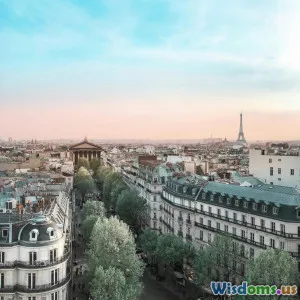
Cultural Heritage: Preserving Our Shared History
6 min read Explore the significance of cultural heritage and methods for preserving our shared history for future generations. (0 Reviews)
Cultural Heritage: Preserving Our Shared History
Cultural heritage is a profound and essential aspect of our society, encapsulating the traditions, values, and histories that shape our identities. It includes tangible elements like monuments, artifacts, and landscapes, as well as intangible components such as language, rituals, and customs. In an ever-changing world, the need to preserve our cultural heritage has never been more critical. This article explores the significance of cultural heritage, the threats it faces, and effective strategies for preservation.
The Importance of Cultural Heritage
Cultural heritage serves as a bridge linking past, present, and future generations. It fosters a sense of belonging and identity, allowing communities to celebrate their uniqueness while also promoting mutual understanding among different cultures. Here are several reasons why preserving cultural heritage is vital:
1. Identity and Belonging
Cultural heritage contributes significantly to our sense of identity. It embodies the stories of our ancestors and the journeys that have shaped our communities. For many, it offers a sense of belonging, reinforcing social cohesion and community ties.
2. Education and Awareness
Cultural heritage enriches educational experiences by providing context to historical events and cultural practices. It encourages curiosity and critical thinking, enabling individuals to understand their place in the world.
3. Economic Value
Preserved cultural heritage can drive economic benefits through tourism and local businesses. Historical sites, museums, and cultural festivals attract visitors, generating revenue and creating jobs in the community.
4. Inspiration and Creativity
Cultural heritage is a source of inspiration for artists, writers, and creatives. It fosters innovation by blending traditional practices with contemporary expressions, leading to the evolution of art forms and cultural expressions.
Threats to Cultural Heritage
Despite its importance, cultural heritage is under threat from various factors:
1. Globalization
The global exchange of ideas, while beneficial in many ways, can lead to cultural homogenization. Local traditions may be overshadowed by dominant cultures, resulting in the loss of unique cultural identities.
2. Urbanization
Rapid urban development often comes at the expense of historical sites and traditional lifestyles. As cities expand, cultural landmarks may be destroyed to make way for new infrastructure.
3. Climate Change
Environmental changes pose significant risks to cultural heritage sites. Rising sea levels, extreme weather events, and natural disasters threaten to damage or erase historical landmarks.
4. Conflict and War
Cultural heritage is often a target during conflicts, with historical sites being destroyed or vandalized. Such acts not only erase history but also exacerbate societal divisions.
Strategies for Preservation
To safeguard our cultural heritage, a multifaceted approach is necessary:
1. Legal Frameworks
Establishing laws and regulations that protect cultural heritage is crucial. International agreements, such as UNESCO’s World Heritage Convention, provide guidelines for member states to protect their cultural sites.
2. Community Involvement
Engaging local communities in preservation efforts is vital. Community-led initiatives ensure that the voices of those most connected to the heritage are heard, fostering a sense of ownership and responsibility.
3. Education and Awareness
Raising awareness about the importance of cultural heritage among younger generations can foster appreciation and advocacy for preservation. Educational programs, workshops, and cultural exchanges can play a significant role in this effort.
4. Sustainable Tourism
Promoting sustainable tourism practices helps balance economic benefits with the need to protect cultural sites. Tourists can be encouraged to engage respectfully with cultural heritage, minimizing their impact on local traditions.
5. Technological Innovations
Advancements in technology offer new possibilities for preservation. Digital archiving, 3D modeling, and virtual reality can help document and recreate cultural heritage, making it accessible to a broader audience.
Conclusion
Cultural heritage is a treasure trove of our shared history, offering insights into who we are and where we come from. As custodians of this heritage, it is our responsibility to ensure its preservation for future generations. By recognizing its value, understanding the threats it faces, and implementing effective preservation strategies, we can safeguard our cultural heritage and celebrate the rich tapestry of human history. Let us work together to create a future where our shared past continues to inspire and connect us all.
Rate the Post
User Reviews
Popular Posts





















